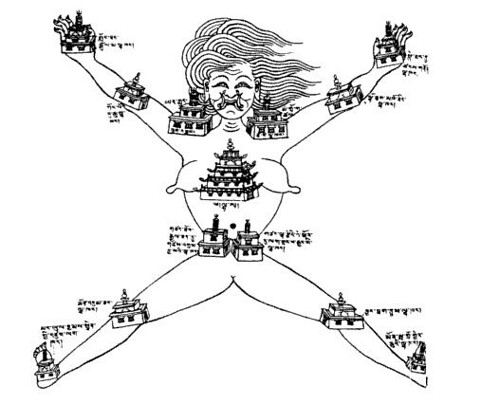The Demoness of Tibet
Tibet; Late 19th/early 20th century
Pigments on cloth
Rubin Museum of Art
The “supine demoness,” a late-nineteenth-century symbolic depiction of the land of Tibet, draws on the great post-dynastic histories of the Jokhang Temple at Lhasa. The image is iconic of Tibet’s rich tradition of geomancy—the art and ritual of landscape. An indispensable facet of religious life across the Plateau, Tibetan geomancy (or jungtsi, “counting the elements”) united the long-established indigenous worship of mountain gods with Chinese concepts of feng shui and Indian tantra to create a rich religious science of moral well-being, community prosperity, and auspicious rule.

The image is drawn from the standard repertoire of Tang dynasty royal feng shui, with which the full story shares many features, including the ability to combine surrounding landscape forms into a united ‘body’. The extent of the demoness’ limbs corresponds broadly with the limits of the emperor’s rule and military conquests, which became in subsequent centuries associated with the boundaries of Greater Tibet (böd chenmo), the province of Tibet’s celestial protector, the bodhisattva Avalokiteshvara (Chenresik).


(Source: The Rubin Museum of Art—Collection Highlight: The Demoness of Tibet